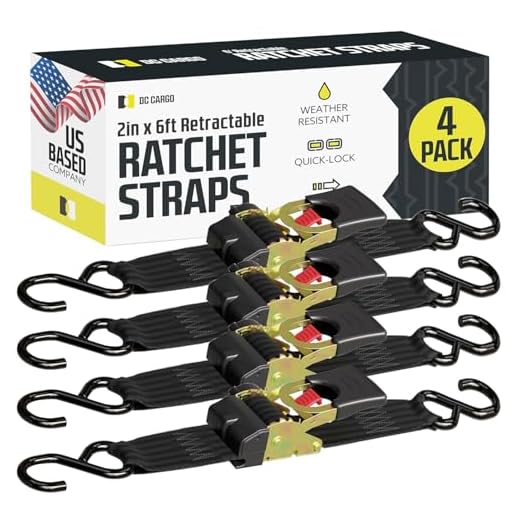



When it comes to transporting a freezer, one common question that arises is whether it can be laid down during transportation. This is a valid concern, as transporting a freezer incorrectly can cause damage and potentially ruin its functionality.
Transporting a freezer laid down is not recommended, as it can lead to several problems. Freezers are designed to operate in an upright position, with the compressor located at the bottom. When a freezer is laid down, there is a risk of oil leakage from the compressor, which can lead to damage and decreased performance. Additionally, the weight of the freezer itself can put pressure on the internal components when laid down, potentially causing them to shift or break.
If you absolutely have no other option but to transport a freezer laid down, there are some precautions you can take to minimize the risks. First, make sure the freezer is completely empty and defrosted. Remove all items and allow the freezer to defrost for at least 24 hours prior to transportation. This will help prevent any water damage or potential ice buildup during transportation.
Secondly, secure the freezer properly to prevent it from moving during transportation. Use strong ropes or straps to tightly secure the freezer. This will help ensure that the freezer remains in place and does not shift or tip over during transportation. It is also recommended to place the freezer on a flat and stable surface, such as a moving dolly or a truck bed, to further reduce the risk of damage.
Lastly, it is important to let the freezer rest for at least 24 hours in an upright position before plugging it back in and turning it on. This will allow the oil to settle back into the compressor and help prevent any potential damage or malfunction. Giving the freezer enough time to rest in its proper position before use is crucial to ensure its optimal performance and longevity.
In conclusion, while transporting a freezer laid down is not ideal and carries certain risks, with proper precautions, it can be done. However, it is always recommended to transport a freezer in an upright position whenever possible to safeguard its functionality and prevent any potential damage.
Transportation Guidelines for Laying Down Freezers
Transporting a freezer can be a delicate operation, particularly when it comes to deciding whether to lay it down or keep it upright. While it is generally recommended to transport freezers in an upright position, there are some instances where laying it down may be necessary. However, it’s important to follow certain guidelines to ensure the safety of the appliance and its contents.
1. Check the manufacturer’s guidelines
Prior to transporting the freezer, consult the manufacturer’s guidelines or the user manual for specific instructions regarding transportation. Some freezers may explicitly state that they should never be laid down, while others may provide specific instructions on how to transport them in a horizontal position safely. Always follow the manufacturer’s guidelines to avoid damaging the freezer.
2. Secure the freezer
If laying the freezer down is necessary, ensure it is properly secured to prevent it from moving during transportation. Use straps or bungee cords to secure the freezer tightly, especially on the sides and along the top. This will help keep the freezer in place and prevent any internal components from being damaged during transportation.
Additionally, make sure to remove any loose or easily detachable parts, such as shelves or drawers, and pack them separately to avoid damage. Secure the doors tightly to prevent them from opening during transportation.
3. Protect the freezer
When laying down a freezer, place it on a soft, non-abrasive surface to prevent scratches on its exterior. This can be achieved by using blankets, towels, or foam padding. Avoid placing the freezer directly on a rough surface, as this could damage the exterior and affect its functionality. It is also advisable to cover the freezer with a protective sheet or plastic wrap to shield it from dust or other debris during transportation.
Remember to take extra precautions when loading or unloading the freezer to avoid any sudden movements or impacts that could cause damage. Use proper lifting techniques and consider seeking assistance if necessary.
While transporting a freezer laid down is not ideal, there are situations where it may be unavoidable. By carefully following these transportation guidelines, you can minimize the risks and ensure a safe journey for your freezer.
Considerations for Transporting a Freezer on its Side
Transporting a freezer can be a challenging task, especially when it comes to deciding whether to transport it upright or on its side. While transporting a freezer on its side is not recommended by manufacturers and can pose certain risks, there are situations where it may be necessary. Here are some considerations to keep in mind if you need to transport a freezer on its side:
1. Read the manufacturer’s instructions
Before transporting a freezer on its side, it is important to consult the manufacturer’s instructions. Some freezers are designed to be transported on their sides, while others explicitly state that they should only be transported upright. Following the manufacturer’s instructions will help ensure that the freezer remains in good working condition during and after transportation.
2. Secure the freezer properly
When transporting a freezer on its side, it is crucial to secure it properly to prevent any damage. Use moving straps or bungee cords to secure the freezer in place and prevent it from tipping over. Additionally, make sure the freezer is adequately padded and cushioned to protect it from any bumps or shocks during transit.
3. Allow sufficient time for the freezer to settle
After transporting a freezer on its side, it is important to let it sit upright for a sufficient amount of time before plugging it in. This allows the refrigerant and compressor oil to settle back into their proper positions. Failure to do so may result in damage to the freezer’s cooling system or compressor.
4. Check for any signs of damage
Inspect the freezer thoroughly after transportation to check for any signs of damage. Look for dents, scratches, or any other visible damage that may have occurred during transit. If any damage is identified, contact the manufacturer for further instructions.
5. Consider professional help
If you are unsure about how to transport a freezer on its side or lack the necessary equipment, it may be best to seek professional help. Moving companies or appliance repair services often have the expertise and equipment to safely transport a freezer without any damage.
Transporting a freezer on its side should be a last resort, as it carries certain risks. However, by following these considerations and taking adequate precautions, you can minimize the chances of any damage occurring during transportation.
Best Practices for Moving a Freezer Horizontally
Moving a freezer horizontally can be a challenging task, but with proper preparation and care, you can successfully transport it without causing any damage. Follow these best practices to ensure a smooth and safe relocation:
1. Empty the Freezer
Prior to moving the freezer, make sure to remove all items from it. This will not only lighten the load but also prevent any potential damage to the freezer’s internal components during transportation.
2. Defrost the Freezer
If your freezer has a build-up of ice, it is important to defrost it before moving. This will prevent water leakage during transportation and also make the freezer lighter to lift and carry.
3. Secure the Door
Before moving the freezer, ensure that the door is securely closed and sealed. You can use tape or rope to keep it shut. This will prevent the door from opening during transportation and causing damage to the freezer or surrounding items.
4. Use Moving Blankets or Pads
To protect the freezer from scratches and dents, wrap it with moving blankets or pads. Secure them tightly using packing tape or rope. This additional layer of padding will help absorb any shocks or impacts that may occur during transportation.
5. Secure the Freezer in the Vehicle
When loading the freezer into a vehicle, make sure to secure it properly. Use straps or bungee cords to hold it in place and prevent it from shifting or tipping over during transit. This will minimize the risk of any accidents or damage occurring.
6. Be Cautious with the Orientation
While it is generally recommended to transport a freezer upright, there are certain circumstances where it may be necessary to move it horizontally. If you have no other option but to transport it on its side, ensure that it remains in that position for the shortest time possible. This will help prevent any oil leakage from the compressor and ensure a smoother and safer relocation.
7. Allow the Freezer to Settle
After reaching your destination, allow the freezer to settle upright for at least 24 hours before plugging it in. This will give enough time for the refrigerant oil to flow back to its proper place, ensuring optimal performance and preventing any potential damage.
By following these best practices, you can safely move your freezer horizontally without compromising its functionality or causing any damage. Remember to handle it with care and take necessary precautions throughout the entire relocation process.
Precautions to Take When Transporting a Freezer Laid Down
Transporting a freezer in a laid-down position can be a challenging task. However, with proper precautions, this can be done safely without causing any damage to the freezer or its contents. Here are some important precautions to consider:
1. Secure the freezer: Before moving the freezer, ensure that it is securely latched or strapped to prevent it from sliding or opening during transportation. This will help to avoid any potential damage to the freezer doors or interior.
2. Empty and defrost the freezer: It is important to empty the freezer completely and allow it to defrost before transportation. Remove all the food, ice, and any other items inside the freezer. This will prevent any spills, leaks, or damage to the freezer during the journey.
3. Protect the freezer: Cover the freezer with a thick blanket or moving pads to provide additional protection during transport. This will help to prevent any scratches, dents, or other physical damage that may occur due to vibrations or unexpected movements.
4. Use proper equipment: Make sure to use appropriate lifting equipment such as dollies or hand trucks to move the freezer safely. These tools will help to distribute the weight evenly and reduce the risk of dropping or mishandling the appliance.
5. Secure the transportation vehicle: Ensure that the transportation vehicle, whether it is a truck or van, is equipped with sufficient padding or tie-down straps. This will help to secure the freezer in place and prevent any movement or shifting during transit.
6. Handle with care: When lifting or moving the freezer, always handle it with care and avoid any sudden movements or jerks. This will help to prevent any internal damage or harm to yourself or others involved in the transportation process.
7. Follow manufacturer’s guidelines: It is crucial to refer to the freezer’s user manual or contact the manufacturer for specific instructions on transporting the freezer in a laid-down position. Following their guidelines will ensure that you take all necessary precautions and prevent any warranty or damage issues.
Remember, improper transportation of a freezer laid down can cause irreversible damage to the appliance, such as compressor failure or coolant leakage. By following these precautions, you can minimize the risks and safely transport your freezer to its new location.
Preparing a Freezer for Transport in a Horizontal Position
Transporting a freezer in a horizontal position can be a convenient option in some scenarios. However, it is important to take proper precautions to ensure the safe transport of the appliance and minimize any potential damage. Here are some steps to prepare a freezer for transport when laying it down:
1. Empty the Freezer:
Begin by removing all items from the freezer, including perishable goods and any loose items or removable shelves. It is also a good idea to defrost the freezer and clean it thoroughly before transportation.
2. Secure the Door:
Ensure that the freezer door is securely closed and sealed. You can use strong tape or a rope to hold the door in place, preventing it from accidentally opening during transport.
3. Protect the Exterior:
Wrap the freezer in a protective covering, such as blankets or bubble wrap, to prevent scratches or dents during transportation. Make sure to secure the covering by using tape or bungee cords.
4. Use Proper Lifting Techniques:
When moving the freezer, always lift with your legs and not your back. Have at least two people to help with the lifting to ensure stability and prevent injuries.
5. Secure the Freezer:
Once the freezer is in the horizontal position, make sure it is properly secured in the transporting vehicle. Use straps or bungee cords to keep it stable and prevent it from sliding or shifting during transit.
6. Transport with Care:
During transportation, avoid any sudden movements or rough terrain that could cause the freezer to move or tip over. Drive carefully and try to minimize any bumps or vibrations that could potentially damage the appliance.
7. Allow for Recovery Time:
After reaching the destination, it is essential to allow the freezer to sit upright and stabilize for a few hours before plugging it in. This recovery time allows the refrigerant and oil to settle back into their proper positions.
Following these steps will help ensure a smooth and safe transport of a freezer in a horizontal position. However, it is always recommended to refer to the manufacturer’s instructions and guidelines for specific recommendations regarding your appliance.
Tips for Safely Moving a Freezer on its Back
Transporting a freezer can be challenging, but sometimes it’s necessary to lay it down on its back. Here are some tips to help ensure your freezer stays safe during the move:
1. Empty the Freezer
Before moving your freezer, make sure to empty it completely. Remove all the food and beverages, and defrost the freezer if necessary. This will not only make the freezer lighter, but it will also prevent any spills or damage to your food while you transport it.
2. Secure the Door
It’s crucial to secure the door of the freezer before moving it. Use strong tape or straps to keep the door closed and prevent it from opening during transportation. This will help to avoid any potential damage to the door or the freezer contents.
3. Protect the Exterior
Cover the exterior of the freezer with blankets or bubble wrap to protect it from scratches or dents. Secure the covering with tape or straps to ensure it stays in place during the move. This extra layer of protection will help to preserve the appearance of your freezer.
4. Use Proper Equipment
When moving a freezer on its back, make sure you have the right equipment. Use a dolly or a hand truck with straps to secure the freezer and prevent it from sliding or tipping over. Additionally, having a helper can ensure a smoother and safer moving process.
5. Be Gentle
While moving the freezer, be gentle and avoid any sudden movements or impacts. Keep a steady pace and take extra care when going over bumps or stairs. This will help to minimize any potential damage to the freezer and ensure a successful move.
By following these tips, you can safely transport a freezer on its back without risking any damage to the appliance or its contents.
FAQ
Is it safe to transport a freezer laying down?
Transporting a freezer laying down is generally not recommended. It can cause damage to the compressor or the cooling system, leading to potential issues with the freezer’s performance.
What can happen if I transport my freezer laying down?
Transporting a freezer laying down can potentially damage the compressor, cooling system, or other internal components. This damage can result in decreased performance or even complete malfunction of the freezer.
Can I transport a freezer laying down in a moving truck?
Transporting a freezer laying down in a moving truck is not ideal. The vibrations and movements during transportation can cause damage to the freezer’s internal components, affecting its performance and possibly leading to the need for repairs.
How should I transport my freezer if I cannot keep it upright?
If you cannot transport your freezer upright, it is best to secure it in an upright position using straps or other securing tools. This will help minimize the potential damage caused by vibrations and movements during transportation. However, if possible, it is still recommended to transport the freezer in an upright position to avoid any potential issues.











